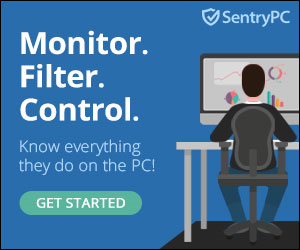Disclosure: We’re reader-supported. When you buy through links on our site, we may earn an affiliate commission at no extra cost to you. For more information, see our Disclosure page. Thanks.
Contents
Website Speed: The Secret to Better Rankings and More Sales
In today’s hyper-competitive digital world, website speed isn’t just a technical factor—it’s an essential element for business success. Websites that load quickly offer a better user experience, improve SEO rankings, and drive higher conversions. As search engines like Google have officially recognized website speed as a ranking factor, ensuring your website is optimized for speed has never been more important. The faster your website loads, the better the experience for your users, and the more likely they are to convert into paying customers.
In this article, we’ll delve into the crucial relationship between website speed, SEO rankings, and sales. We’ll also provide actionable tips to help you optimize your site’s speed, improve your search engine visibility, and increase conversions.
Why Website Speed is Crucial for SEO
Search engines, particularly Google, prioritize fast-loading websites because they deliver better user experiences. Websites that load quickly not only keep visitors happy but also send positive signals to search engines, which consider website speed when determining rankings.
1. Better User Experience
A fast-loading website is essential for a positive user experience. According to studies, users expect a website to load within 3 seconds. If it takes longer, users are likely to abandon the site and seek alternatives. A fast website leads to lower bounce rates and longer dwell times, two key engagement metrics that search engines like Google monitor to rank websites.
2. Core Web Vitals
Google’s Core Web Vitals update, which focuses on user experience signals, includes page speed as a ranking factor. The three primary metrics under this update—Largest Contentful Paint (LCP), First Input Delay (FID), and Cumulative Layout Shift (CLS)—all evaluate how quickly your website loads and how interactive it is for users.
3. Mobile Performance
Mobile-first indexing means that Google uses the mobile version of your website to determine rankings, even on desktop searches. As more users browse the web on mobile devices, it’s crucial to ensure your website is optimized for mobile speed. If your mobile version of the site is slow, it will negatively affect both your SEO rankings and your mobile user experience.
How Website Speed Affects Conversions
The relationship between website speed and conversions is significant. Studies show that every second of delay can result in a significant drop in conversion rates. A slow-loading website may lead to lost sales, missed opportunities, and poor user engagement. Here’s a breakdown of how speed influences conversions:
1. Ecommerce Sites
For eCommerce websites, fast load times are crucial for closing sales. When a website takes too long to load, potential buyers may abandon their carts or leave the site altogether. According to Amazon, a delay of just 1 second in page load time can result in a 7% reduction in conversions.
If you run an online store, optimizing your website for speed can have a direct impact on your bottom line.
2. Lead Generation
For lead generation websites, such as those that offer downloadable resources, subscription services, or free trials, speed is also a critical factor. A slow website results in a higher bounce rate and fewer form submissions. Users are more likely to engage with content and submit forms if the website loads quickly and efficiently.
3. Content Websites
For content-heavy websites like blogs or news sites, slow load times can lead to increased bounce rates and decreased user engagement. Visitors may not stick around to read the content if the site is slow, and they are less likely to return for future visits. If you want to maximize content engagement, speed is one of the most important factors to consider.
How to Improve Website Speed
Improving website speed doesn’t have to be overwhelming. By implementing a few simple strategies, you can significantly improve your website’s load time and overall performance. Here are some of the best ways to speed up your site:
1. Image Optimization
Images are one of the most common culprits behind slow-loading websites. Large image files can significantly increase your page load time. Image compression reduces the size of image files without sacrificing visual quality, which speeds up your website.
Tools like TinyPNG, Smush, and ImageOptim can help you compress images to ensure they load quickly.
2. Enable Caching
Caching allows your website to store static files like images, JavaScript, and CSS on a visitor’s browser. This means that users don’t have to re-download these files every time they visit your site, which results in faster load times.
If you’re using WordPress, caching plugins like W3 Total Cache or WP Super Cache can significantly improve load times.
3. Minimize HTTP Requests
Every time a user visits your website, their browser sends HTTP requests for files like images, stylesheets, and JavaScript. The more HTTP requests your website makes, the longer it will take to load. By minimizing HTTP requests, you can reduce load times.
You can do this by combining CSS files, minifying JavaScript, and using image sprites.
4. Use a Content Delivery Network (CDN)
A Content Delivery Network (CDN) helps to distribute your website’s static content (images, CSS, JavaScript) across multiple servers around the world. This allows users to load content from the server nearest to them, improving site speed, especially for international visitors.
If you want to implement a CDN, services like Cloudflare, KeyCDN, and StackPath can help. To learn more about how CDNs work, read our article on CDNs Explained: How to Boost Website Speed and Performance Instantly.
5. Upgrade Hosting
If your website is still slow despite optimization efforts, your hosting provider may be the bottleneck. Shared hosting plans often limit your website’s resources, making it difficult for your site to handle traffic surges or heavy content. Upgrading to cloud hosting, VPS hosting, or a dedicated server can provide the resources your site needs to load quickly.
For more information on hosting upgrades and their impact on speed, read our article on Why High-Traffic Sites Need Better Hosting.
Conclusion
Website speed is much more than a technical detail—it’s an integral part of your SEO strategy and a driving force behind your conversions. A fast-loading website creates a positive user experience, helps you rank higher in search engines, and increases sales. By optimizing your images, enabling caching, using a CDN, and upgrading your hosting, you can significantly improve your website’s speed and achieve better results.
In the competitive online landscape, website speed is not optional—it’s essential. By investing in speed optimization, you’ll not only enhance your SEO rankings but also see a significant improvement in your business’s performance. So, start optimizing your site today, and reap the rewards of faster load times and better conversions.


